Everything You Need to Know About Turkey’s 10 Largest Cities
Turkey has hosted many civilisations throughout history and has a unique geography that stands out with its cultural heritage and natural richness. Turkey's major cities spread across the country attract visitors not only with their population but also with their quality of life, economic strength, historical texture and social diversity. From Istanbul to Gaziantep, Izmir to Şanlıurfa, Turkey's biggest cities stand out as centres worth discovering, each with its own character.
In this comprehensive guide, you will find everything you need to know about Turkey's 10 most populous cities. It provides detailed information about the highlights, tourist attractions, historical buildings, local flavours, natural beauties and cultural life of the cities. If you want to have an idea about cities to visit in Turkey, regions with high living standards or strategic cities for investment, this content will help you as a guide.
Whether you are a local traveller or a foreigner who wants to get to know Turkey closely, this article is ready for you with all the information you are looking for. So, what are the biggest cities in Turkey? What city should you visit in Turkey? Let's explore together!
1. Istanbul – The Heart of Turkey, a Global Megacity
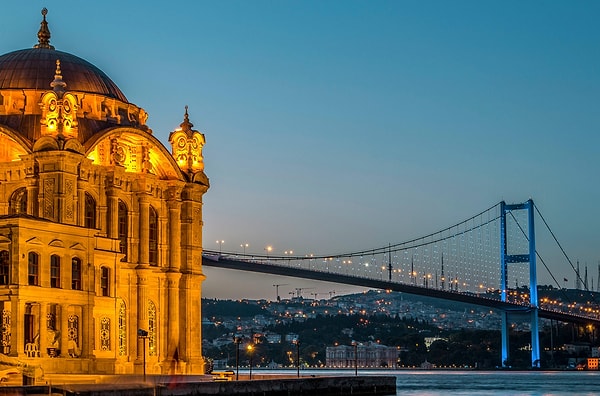
Population (2024): With approximately 15.7 million people, it is by far the most populous city in Turkey. This accounts for approximately 18% of the country's population.
Istanbul is not only one of Turkey's most important metropolises, but also one of the most important in Europe and the Middle East. A unique city with both historical heritage and modern life, Istanbul is one of the few cities in the world to have been the capital of three great empires: Rome, Byzantium and the Ottoman Empire.
History and Culture
Istanbul's history dates back to the 7th century BC. The city was known as ‘Constantinople’ during the Byzantine period. Istanbul's historical fabric still captivates visitors today:
Hagia Sophia is one of the most important buildings of the Byzantine Empire and is now used as a mosque.
Topkapi Palace is a magnificent complex where Ottoman sultans lived for hundreds of years.
The Sultanahmet Mosque is a historical and architectural masterpiece that adorns the skyline of Istanbul.
The Grand Bazaar is one of the oldest and largest covered markets in the world, with nearly 4,000 shops.
Economic Power
Istanbul accounts for approximately 31% of Turkey's GDP. It is home to a concentrated workforce in the finance, media, technology, industry, tourism, and retail sectors. The Istanbul Stock Exchange and many national and international banks are located here.
Natural Beauty
The Bosphorus connects Asia and Europe, making Istanbul unique both geographically and culturally.
The Princes' Islands offer ideal natural beauty for escaping the city.
Natural areas such as Emirgan Grove, Belgrade Forest, and Yıldız Park are places to breathe fresh air within the city.
Culture and Lifestyle
Every year, dozens of national and international festivals, biennials, and fairs are held in Istanbul. The city is filled with modern art galleries, opera houses, theatre stages, and independent cinemas.
2. Ankara – Capital of Turkey and Centre of Bureaucracy
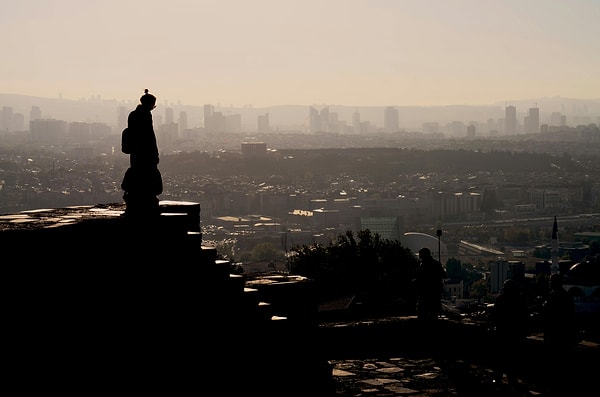
Population (2024): Approximately 5.86 million, making it Turkey's second largest city.
Proclaimed the capital of the Republic of Turkey in 1923, Ankara is not only a political centre but also a powerful cultural and educational hub. Located in a strategic position in the Central Anatolia Region, the city has developed in a planned manner.
Political and Strategic Importance
Ankara is home to the Turkish Grand National Assembly (TBMM), the Presidential Complex, ministries, high judicial bodies, and all diplomatic missions. It is the centre where Turkey's political decisions are made.
Historical Richness
Anıtkabir, the mausoleum of Mustafa Kemal Atatürk, the founder of the Republic, is the symbol of Ankara.
The Roman Baths and the Temple of Augustus are archaeological remains that reflect the city's importance in ancient times.
Ankara Castle is located on a historic hill from which you can enjoy a bird's-eye view of the city.
Education and Science
Ankara is home to some of Turkey's most established universities: ODTÜ, Hacettepe, Bilkent and Ankara University. These institutions are prominent in both education and scientific research.
Culture and Events
Ankara is rich in culture and arts, with the Ankara State Theatres, State Opera and Ballet, and the Presidential Symphony Orchestra. It also hosts events such as the International Ankara Film Festival and the Ankara Jazz Festival, bringing together art enthusiasts.
3. Izmir – The Pearl of the Aegean and Cradle of Civilisations

Population (2024): Approximately 4.49 million. It is Turkey's third-largest city.
Izmir is one of Turkey's most livable cities with its history, sea, culture and modern urban structure. With a history dating back 8,500 years, it has been one of the most established centres of civilisation in Western Anatolia.
History and Heritage
Izmir was known as ‘Smyrna’ in ancient times.
The ancient city of Ephesus is one of the best-preserved ancient cities in the world and is listed as a UNESCO World Heritage Site.
The Agora, Kadifekale, and the Izmir Archaeology Museum are important sites that bear witness to history.
The Izmir Clock Tower is located in Konak Square and is a symbol of the city.
Tourism and Nature
Izmir is highly developed in terms of maritime tourism.
Towns such as Çeşme, Alaçatı, and Urla host hundreds of thousands of tourists during the summer months.
Şirince Village is famous for its stone houses and wines.
The Karaburun Peninsula attracts visitors with its tranquil nature.
Cultural Dynamism
Izmir is known as a city with a strong secular and contemporary lifestyle. It has a city culture filled with art galleries, performing arts and concerts. Events such as the International Izmir Fair and the Izmir European Jazz Festival also contribute to this cultural dynamism.
4. Bursa – The First Capital of the Ottoman Empire, a City Where Industry and History Meet

Population (2024): Approximately 3.23 million
Located in the south of the Marmara Region, Bursa is one of Turkey's most important cities in terms of both history and economy. It was the first capital of the Ottoman Empire and therefore has a deep historical identity.
History and Ottoman Heritage
Ulu Mosque, Yeşil Tomb, and Emir Sultan Mosque are unique examples of classical Ottoman architecture.
Cumalıkızık Village is one of the few places where the village fabric from the Ottoman period has been preserved and is listed as a UNESCO World Heritage Site.
Natural Riches
Uludağ is the jewel of winter tourism. With its ski resorts, mountain hiking trails, and natural life, it welcomes thousands of tourists every year.
Oylat Hot Springs are quite popular for health tourism.
Lake Iznik is ideal for camping and nature sports.
Economy and Industry
Bursa is Turkey's automotive and textile production centre. In addition to major automotive factories such as TOFAŞ and OYAK Renault, hundreds of ancillary industry companies also operate in this city. It is also strong in the agriculture and food sectors.
5. Antalya – Turkey's Holiday Capital and Tourism Giant
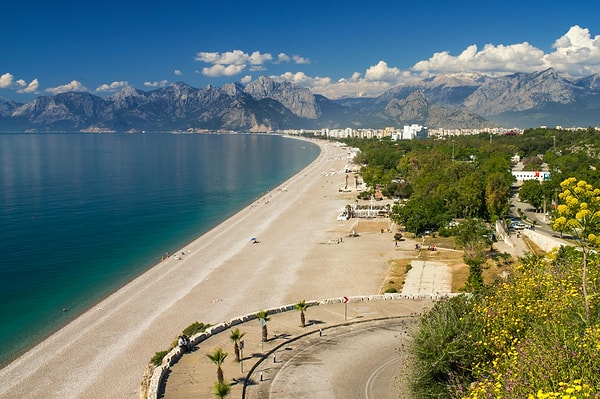
Population (2024): Approximately 2.72 million
Antalya, located on the Mediterranean coast and one of Turkey's largest tourist cities, welcomes millions of local and foreign tourists every year. In addition to its sea, sand and sun, it is also renowned for its historical and natural beauty.
Tourism Paradise
Tourism is the backbone of Antalya's economy.
Coastal areas such as Lara, Konyaaltı, and Belek are filled with five-star hotels.
Tourist districts like Side, Alanya, and Kemer attract visitors with their natural beauty and lively nightlife.
In 2023, the city welcomed nearly 15 million tourists.
Historical Sites
The Aspendos Ancient Theatre still hosts concerts and performances today.
Ancient cities such as Perge, Termessos, and Phaselis are popular destinations for history enthusiasts.
Kaleiçi offers a nostalgic atmosphere with its Ottoman-era houses and narrow streets.
Natural Beauty
The Düden, Kurşunlu, and Manavgat Waterfalls offer postcard-worthy views.
Mount Olympos and Yanartaş are unique experiences for both mythology enthusiasts and nature lovers.
Saklıkent Canyon and Köprülü Canyon are important centres for adventure sports.
6. Konya – The City of Mevlana, the Spiritual Centre of Anatolia
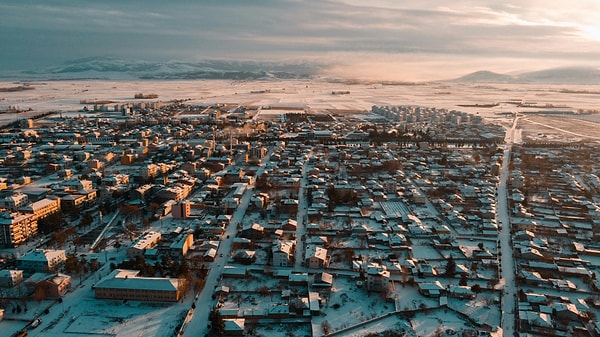
Population (2024): Approximately 2.33 million
Located in the vast steppes of Central Anatolia, Konya is not only Turkey's largest province in terms of area, but also holds a very special place in terms of history and spirituality. The city is significant both historically and mystically due to its status as the capital of the Seljuk Empire and the fact that Mevlana Celaleddin Rumi lived here.
Spiritual Identity and Mevlana
The Mevlana Museum is the most important centre of the Sufi tradition, welcoming millions of visitors each year.
The Şeb-i Arus ceremonies are sema performances held on the anniversary of Mevlana's death, known as the ‘night of union.’
These events attract not only local but also foreign tourists.
Seljuk Heritage
Structures such as the Alaeddin Mosque, the İnce Minareli Medrese, and the Karatay Medrese represent the pinnacle of Seljuk architecture.
The village of Sille, located in the centre of Konya, attracts attention with its historic churches and traces of Turkish-Greek coexistence.
Nature and Geography
Lake Beyşehir is one of Turkey's largest freshwater lakes. The lake's surroundings are ideal for nature walks, camping, and fishing.
Lake Meke is a crater lake and an important natural wonder in terms of volcanic structures.
Obruk Lakes offer unique visual feasts for photographers.
Economy and Transportation
Konya is one of Turkey's agricultural production centres. It is particularly prominent in the production of wheat, barley and sugar beet. It is also growing in the agricultural machinery and automotive industries thanks to its modern, organised industrial zones. Konya is directly connected to Istanbul and Ankara via the High Speed Train (YHT) line.
7. Adana – The Fire of the Mediterranean, Turkey's Culinary Capital
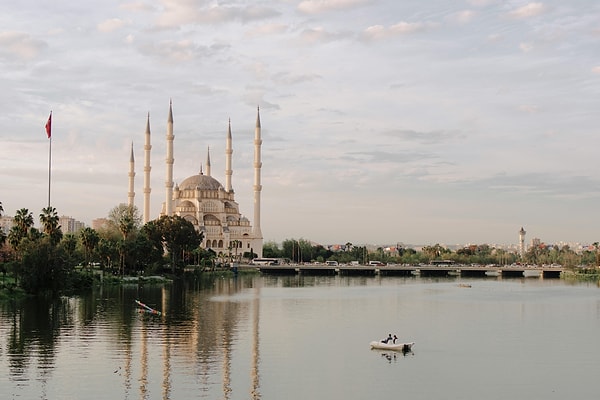
Population (2024): Approximately 2.28 million
Adana is one of Turkey's hottest cities. It is located in the eastern part of the Mediterranean Region. It holds a special place in Turkey's cultural mosaic with its agriculture, gastronomy, industry, and historical past.
Gastronomy
Adana kebab is a well-known delicacy not only in Turkey but also in international cuisine.
Local delicacies such as şalgam, bici bici, taş kadayıf, and içli köfte add variety to Adana's cuisine.
The Adana Flavour Festival, held every year, highlights the city in terms of gastronomic tourism.
History and Heritage
Taşköprü is one of the oldest bridges in the world, dating back to the Roman period and still in use today.
Büyük Saat is Turkey's tallest clock tower, dating back to the Ottoman period.
Adana Ulu Mosque and Ramazanoğlu Mansion are structures that reflect the city's Islamic and beylik periods.
Economy and Industry
Adana has been home to production periods known as ‘White Gold’ due to its cotton production and textile industry. Today, it is still a leader in the food, chemical, cement and energy sectors. The city also plays an important role in strategic energy transportation with the Ceyhan Port and Yumurtalık Free Zone.
Natural Resources
The Seyhan and Ceyhan rivers flow through the city, contributing to both agriculture and visual aesthetics in Adana.
The Yumurtalık and Karataş coasts attract attention with their natural coastal ecosystems.
8. Şanlıurfa – City of Prophets, Beginning of Human History

Population (2024): Approximately 2.24 million
Şanlıurfa is an ancient settlement located in the Southeastern Anatolia Region and known as the ‘City of Prophets.’ It is unique in that it is both a region where important figures in Islamic culture lived and home to Göbeklitepe, the world's oldest known temple.
Historical and Religious Tourism
Göbeklitepe is a temple complex dating back 12,000 years that sheds light on the origins of civilisation.
Balıklıgöl is a sacred place where it is believed that Abraham was thrown into the fire by Nemrut.
Harran is famous for its conical domed houses and was home to one of the world's oldest universities.
Cultural Heritage
Arab, Kurdish, Turkish and Turkmen cultures coexist in Şanlıurfa.
Sıra nights are the city's traditional form of music and entertainment.
Traditional crafts such as copperwork and carpet weaving are still actively practised.
Agriculture and Economy
The Harran Plain, irrigated by the Euphrates River, is one of Turkey's most fertile agricultural areas. Cotton, wheat and lentils are the main crops. The GAP (Southeastern Anatolia Project) has accelerated the region's development process.
9. Gaziantep - Turkey's Industrial Powerhouse and Capital of Gastronomy

Population (2024): Approximately 2 million
Gaziantep is one of the most dynamic cities of Turkey with its historical and economic structure. It is located in the Southeastern Anatolia Region and is one of the country's locomotive cities in the fields of industry, trade and tourism.
Gastronomy
Gaziantep baklava is Turkey's first geographically marked dessert and is recognised worldwide.
Kebab culture, katmer, beyran, yuvalama, stuffed meatballs are just some of the rich cuisine of the city.
In 2015, it was included in the Creative Cities Network by UNESCO as a City of Gastronomy.
History and Archaeology
Zeugma Ancient City and Zeugma Mosaic Museum attract history enthusiasts with their mosaics from the Roman period.
Gaziantep Castle, Bakırcılar Bazaar, and Emine Göğüş Kitchen Museum are the buildings that keep the city's texture alive.
Industry and Economy
Gaziantep has one of the largest organised industrial zones in Turkey. Carpet, yarn, plastic, food and chemical industries are at the forefront. It is also one of the leading cities after Istanbul and Kocaeli in terms of exports.
10. Kocaeli - Turkey's Industrial Capital and Logistics Base
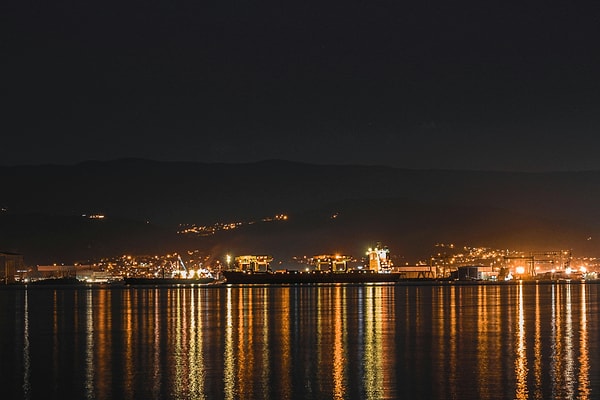
Population (2024): Approximately 1.95 million
Kocaeli is located in the east of the Marmara Region and is an industrial mega-city neighbouring Istanbul. The city is one of Turkey's most strategic regions in terms of both production and transport.
Industry and Economy
Turkey's largest organised industrial zones are located in districts such as Gebze, Izmit and Kartepe.
It carries the burden of the country in the automotive (Ford Otosan, Hyundai), chemical (Petkim, Tüpraş), energy and port transport sectors.
Derince and Evyap Ports handle a significant portion of Turkey's foreign trade.
Natural Beauties
Kartepe attracts great attention with ski tourism in winter months.
Maşukiye is an escape point, especially on weekends, with its restaurants, waterfalls and hiking trails intertwined with nature.
Its proximity to Lake Sapanca increases its attractiveness in terms of nature tourism.
Transport and Logistics
Kocaeli connects Istanbul-Ankara traffic via TEM and D-100 motorways. It also plays a key role in Turkey's transport backbone with its railway and maritime transport infrastructure.
Keşfet ile ziyaret ettiğin tüm kategorileri tek akışta gör!

Send Comment